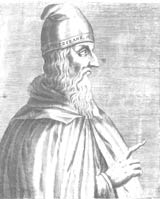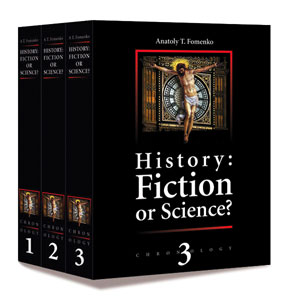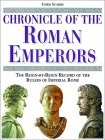|
"All men by nature desire knowledge"
Aristotle, more than any other thinker, determined the orientation and the content of Western intellectual history. He was the author of a philosophical and scientific system that through the centuries became the support and vehicle for both medieval Christian and Islamic scholastic thought: until the end of the 17th century, Western culture was Aristotelian. And, even after the intellectual revolutions of centuries to follow, Aristotelian concepts and ideas remained embedded in Western thinking. We suggest that modern bussiness code ethics is grandfathered by Aristotle. The limited space of our page does not allow for famous quotes by philosophers. It does not hold the answer to ethics of human cloning or biography of Aristotle.
Does the Earth Move?
In the 4th century BCE, Aristotle organized all of classical science and defined its methodology. His writings became the core of learning in Western culture through the middle ages. Aristotle affirmed the geometric model of Plato, and even added to the many spheres of Eudoxus, although Aristotle denied the harmony of the spheres. He thought that any sound made by a body as large as the moon would be deafening.
Aristotle contrasted the nature of the heavens (the superlunary realm, above the orbit of the moon) with the nature things on earth. The four elements in the sublunar realm are fire, air, earth, and water. Earthly matter is changeable; it experiences generation and decay. Its natural motion is to fall on a straight line if heavy, or rise toward the moon on a straight line, as smoke from a fire. The motion of earthly matter terminates when it reaches its natural place.
Everything in the heavens is made of just one perfect element, aether, which is permanent, unchanging and incorruptible; its natural motion is circular and without rest.
The natural places and motions of everything above and below are determined by the intrinsic geometry of an absolute space, and not just by relations among things. Advocates of a moving earth will therefore need to supply a new theory of motion.
 Although most Greek philosophers agreed that the earth is at the center of the universe, Aristarchus of Samos (3rd century BCE) is a notable expception, the more so because he became the head of the Peripatetic school. Aristarchus believed that the earth orbits the sun; he assumed that the distance to the stars is so great that the size of earth's orbit is as nothing compared to it. For his heliocentric views, Aristarchus was accused of impiety. (Copernicus knew about Aristarchus, but, perhaps nervous about the ancient charges of impiety, never mentioned him in De revolutionibus.)
In the 2nd century BCE, the Greek astronomer Ptolemy of Alexandria refined the geocentric model of Pythagoras and Plato using epicycles, that is, circles riding on circles, to account for retrograde motion of the planets.
Although most Greek philosophers agreed that the earth is at the center of the universe, Aristarchus of Samos (3rd century BCE) is a notable expception, the more so because he became the head of the Peripatetic school. Aristarchus believed that the earth orbits the sun; he assumed that the distance to the stars is so great that the size of earth's orbit is as nothing compared to it. For his heliocentric views, Aristarchus was accused of impiety. (Copernicus knew about Aristarchus, but, perhaps nervous about the ancient charges of impiety, never mentioned him in De revolutionibus.)
In the 2nd century BCE, the Greek astronomer Ptolemy of Alexandria refined the geocentric model of Pythagoras and Plato using epicycles, that is, circles riding on circles, to account for retrograde motion of the planets.
The switch from spheres to circles and epicycles had been initiated by Apollonius, the conics expert, and developed by Hipparchus, author of the first known star atlas. The circles made the astornomer's work of calculating manageable; at that time "calculating" meant complex and painstakingly accurate constructions with compass and straight edge.
Aristotle's editors gave the name "Metaphysics" to his works on first philosophy, either because they went beyond or followed after his physical investigations. Aristotle begins by sketching the history of philosophy. For Aristotle, philosophy arose historically after basic necessities were secured. It grew out of a feeling of curiosity and wonder, to which religious myth gave only provisional satisfaction. The earliest speculators (i.e. Thales, Anaximenes, Anaximander) were philosophers of nature. The Pythagoreans succeeded these with mathematical abstractions. The level of pure thought was reached partly in the Eleatic philosophers (such as Parmenides) and Anaxagoras, but more completely in the work of Socrates. Socrates' contribution was the expression of general conceptions in the form of definitions, which he arrived at by induction and analogy. For Aristotle, the subject of metaphysics deals with the first principles of scientific knowledge and the ultimate conditions of all existence. More specifically, it deals with existence in its most fundamental state (i.e. being as being), and the essential attributes of existence. This can be contrasted with mathematics which deals with existence in terms of lines or angles, and not existence as it is in itself. In its universal character, metaphysics superficially resembles dialectics and sophistry. However, it differs from dialectics which is tentative, and it differs from sophistry which is a pretence of knowledge without the reality.
The axioms of science fall under the consideration of the metaphysician insofar as they are properties of all existence. Aristotle argues that there are a handful of universal truths. Against the followers of Heraclitus and Protagoras, Aristotle defends both the laws of contradiction, and that of excluded middle. He does this by showing that their denial is suicidal. Carried out to its logical consequences, the denial of these laws would lead to the sameness of all facts and all assertions. It would also result in an indifference in conduct. As the science of being as being, the leading question of Aristotle's metaphysics is, What is meant by the real or true substance? Plato tried to solve the same question by positing a universal and invariable element of knowledge and existence -- the forms -- as the only real permanent besides the changing phenomena of the senses. Aristotle attacks Plato's theory of the forms on three different grounds.
First, Aristotle argues, forms are powerless to explain changes of things and a thing's ultimate extinction. Forms are not causes of movement and alteration in the physical objects of sensation. Second, forms are equally incompetent to explain how we arrive at knowledge of particular things. For, to have knowledge of a particular object, it must be knowledge of the substance which is in that things. However, the forms place knowledge outside of particular things. Further, to suppose that we know particular things better by adding on their general conceptions of their forms, is about as absurd as to imagine that we can count numbers better by multiplying them. Finally, if forms were needed to explain our knowledge of particular objects, then forms must be used to explain our knowledge of objects of art; however, Platonists do not recognize such forms. The third ground of attack is that the forms simply cannot explain the existence of particular objects. Plato contends that forms do not exist in the particular objects which partake in the forms. However, that substance of a particular thing cannot be separated from the thing itself. Further, aside from the jargon of "participation," Plato does not explain the relation between forms and particular things. In reality, it is merely metaphorical to describe the forms as patterns of things; for, what is a genus to one object is a species to a higher class, the same idea will have to be both a form and a particular thing at the same time. Finally, on Plato's account of the forms, we must imagine an intermediate link between the form and the particular object, and so on ad infinitum: there must always be a "third man" between the individual man and the form of man.
For Aristotle, the form is not something outside the object, but rather in the varied phenomena of sense. Real substance, or true being, is not the abstract form, but rather the concrete individual thing. Unfortunately, Aristotle's theory of substance is not altogether consistent with itself. In the Categories the notion of substance tends to be nominalistic (i.e., substance is a concept we apply to things). In the Metaphysics, though, it frequently inclines towards realism (i.e., substance has a real existence in itself). We are also struck by the apparent contradiction in his claims that science deals with universal concepts, and substance is declared to be an individual. In any case, substance is for him a merging of matter into form. The term "matter" is used by Aristotle in four overlapping senses. First, it is the underlying structure of changes, particularly changes of growth and of decay. Secondly, it is the potential which has implicitly the capacity to develop into reality. Thirdly, it is a kind of stuff without specific qualities and so is indeterminate and contingent. Fourthly, it is identical with form when it takes on a form in its actualized and final phase.
The development of potentiality to actuality is one of the most important aspects of Aristotle's philosophy. It was intended to solve the difficulties which earlier thinkers had raised with reference to the beginnings of existence and the relations of the one and many. The actual vs. potential state of things is explained in terms of the causes which act on things. There are four causes:
1. Material cause, or the elements out of which an object is created;
2. Efficient cause, or the means by which it is created;
3. Formal cause, or the expression of what it is;
4. Final cause, or the end for which it is.
Take, for example, a bronze statue. Its material cause is the bronze itself. Its efficient cause is the sculptor, insofar has he forces the bronze into shape. The formal cause is the idea of the completed statue. The final cause is the idea of the statue as it prompts the sculptor to act on the bronze. The final cause tends to be the same as the formal cause, and both of these can be subsumed by the efficient cause. Of the four, it is the formal and final which is the most important, and which most truly gives the explanation of an object. The final end (purpose, or teleology) of a thing is realized in the full perfection of the object itself, not in our conception of it. Final cause is thus internal to the nature of the object itself, and not something we subjectively impose on it.
God to Aristotle is the first of all substances, the necessary first source of movement who is himself unmoved. God is a being with everlasting life, and perfect blessedness, engaged in never-ending contemplation.
|









